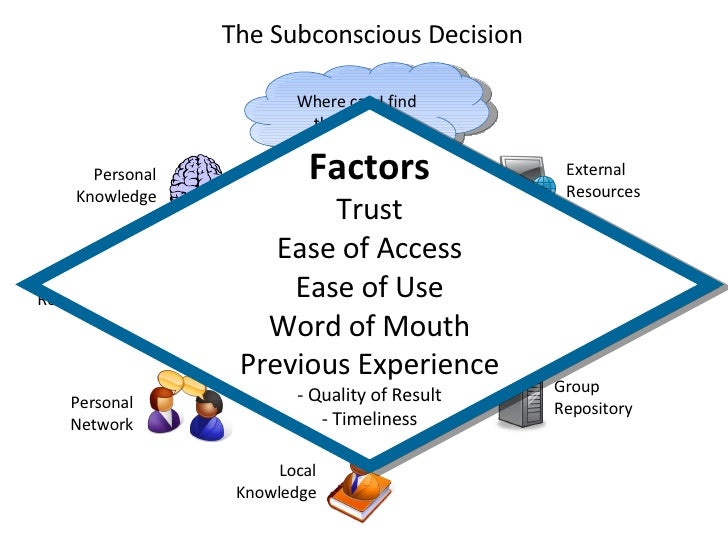
- #Knowledge and decisions manual#
- #Knowledge and decisions full#
- #Knowledge and decisions professional#
#Knowledge and decisions full#
They produce lots of memos and presentations full of analyses and recommendations. Their raw materials are data, either from their own information systems or from outside providers. But they do produce something, and it is perfectly reasonable to characterize their work as the production of decisions: decisions about what to sell, at what price, to whom, with what advertising strategy, through what logistics system, in what location, and with what staffing levels.Īt desks and in meeting rooms, every day of their working lives, knowledge workers hammer away in decision factories. What do knowledge workers actually do? Clearly they don’t manufacture products or perform basic services. The initial results from this approach are extremely encouraging if it is applied more widely, we may finally be able to bid farewell to the current, perverse management cycle. In the following pages I’ll demonstrate how destructive, if understandable, these two beliefs are and describe an emerging paradigm for the management of knowledge workers that is being developed at Procter & Gamble.
#Knowledge and decisions manual#
The second (which derives in part from the first) is to assume that knowledge is necessarily bundled with the workers and, unlike manual labor, can’t readily be codified and transferred to others. The first is to think that they should structure this workforce as they do a manual workforce-with each employee doing the same tasks day in and day out. In particular, most companies make two big mistakes in managing knowledge workers. Why do these companies struggle so much with what ought to be their most productive assets? The answer, I think, is rooted in a profound misunderstanding-despite decades of research and debate about the knowledge economy-of how knowledge work does and does not differ from the manual work we have come to understand so well.

Colgate-Palmolive, MetLife, Hewlett-Packard, and PepsiCo, among others, have all recently gone through the same process. By 2007 the numbers were back up again-until the recession forced cuts once more. After a gradual regrowth in its ranks, the company announced another round of layoffs in 2001. General Electric, for example, conducted extensive management layoffs in the 1980s and early 1990s. What’s especially puzzling is that the companies that engage in this cycle include some of America’s most revered role models.

Aside from the human and social costs involved, it is extremely inefficient for a company to manage any resource this way, let alone one that is widely recognized as the engine of growth in the modern age. Soon after, though, they’re out recruiting again. For a while this is fine, but inevitably, usually when economic conditions turn less favorable, they realize that these expensive workers are not as productive as hoped, and in an effort to manage costs they lay off a large swath of them. They compete fiercely to find and retain the best talent, often accumulating thousands of managers in the process.
#Knowledge and decisions professional#
The solution is to structure knowledge work the way professional services firms do-with capabilities flowing to the projects that need them-and to put key executives in charge of codifying knowledge.Ĭompanies everywhere struggle with the management of knowledge workers. Of course it’s not in their interest to advertise any spare capacity-that could lead to a poor performance review or even a layoff-and this survival imperative gets in the way of knowledge transfer. The trouble is that knowledge work comes primarily in the form of projects, not routine daily tasks, so these employees often have downtime. But they also assume that knowledge is necessarily bundled with the workers-and is almost impossible to codify and transfer as one could do with manual work. They think they should structure the former like the latter-with each worker doing the same job for a full shift. The problem exists, he believes, because most companies misunderstand how knowledge work does and doesn’t differ from manual work. This binge-and-purge cycle is highly destructive, writes the author: Aside from the human and social costs involved, it is an extremely inefficient way to manage any resources, let alone knowledge workers.

So they lay off a huge number of them and soon after are out recruiting again. Companies everywhere compete to find the best talent in knowledge work and often wind up with thousands of expensive employees who aren’t as productive as hoped.


 0 kommentar(er)
0 kommentar(er)
